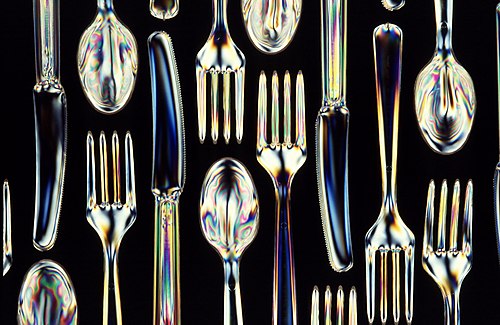Facts for Kids
Bioplastics are sustainable alternatives to traditional plastics, made from renewable resources and often designed to be biodegradable or recyclable.
Overview
Environmental Impact
Production Processes
Types Of Bioplastics
History Of Bioplastics
Challenges And Limitations
Applications Of Bioplastics
Biodegradation And Recycling
Future Trends In Bioplastics

Inside this Article
Landfills
Pollution
Recycling
Bacteria
Medicine
Climate
People
Nature
Planet
Did you know?
🌿 Bioplastics are derived from renewable biomass sources, such as plants and microorganisms.
♻️ Unlike conventional plastics, many bioplastics are biodegradable, breaking down more quickly in the environment.
🌍 The production of bioplastics can reduce greenhouse gas emissions compared to traditional petroleum-based plastics.
🍃 Common materials used to make bioplastics include starch, cellulose, and polylactic acid (PLA).
🧬 Bioplastics can be engineered to mimic the properties of conventional plastics, making them suitable for various applications.
🌱 The use of bioplastics can help decrease reliance on fossil fuels, promoting more sustainable practices.
🚮 Some bioplastics can be composted in industrial facilities, contributing to a circular economy.
🌻 The global bioplastics market has been growing rapidly, driven by increasing environmental concerns and regulatory changes.
⚗️ Bioplastics can be utilized in numerous applications, from packaging to automotive parts and textiles.
📦 Not all bioplastics are biodegradable; some are designed to be recyclable instead.
Introduction
They help us reduce waste and protect our planet! Bioplastics can sometimes break down over time, making them a better choice for the environment. They are used in many everyday items like bags, bottles, and food containers. Wouldn't it be cool if all plastic was bioplastic? That's what scientists are working on! 🔬🌍
Environmental Impact
Unlike traditional plastics, which can take hundreds of years to break down, many bioplastics decompose more quickly. 🌱
This means less pollution and plastic in landfills. However, not all bioplastics can go in your compost pile! Some need special conditions to break down. It's essential to check if your bioplastic is compostable or recyclable! ♻
️ Making the switch to bioplastics is a great way to make our planet a cleaner place!
Production Processes
First, natural ingredients like corn or sugarcane are collected. Then, scientists extract the starch or sugars from these plants. 🍃
This material is then fermented by tiny organisms or chemically modified to form plastic. 👩
🔬 The result is bioplastics that can be formed into various shapes, just like traditional plastics! The best part? This process is cleaner and creates less pollution! 🌈
Types Of Bioplastics
Bio-based plastics come from natural materials, such as corn starch, while biodegradable plastics can break down into natural materials in a short time. 🕒
Popular bioplastics include PLA (made from corn) and PHA (made from bacteria). Did you know that PHA can even be made from spoiled food? 😋
Different bioplastics are used for different purposes, from packaging to making cups!
History Of Bioplastics
A French chemist named Henri Braconnot created a material from plant fibers. However, it wasn’t until the 1970s that bioplastics became popular again! 🌟
Nowadays, more places like the USA and Germany focus on making and using bioplastics to protect our Earth. By the 2000s, many companies began making bioplastics from materials like corn and potatoes. 🌽🥔 Changes in climate and pollution have pushed people to look for greener solutions!
Challenges And Limitations
Additionally, growing the crops for bioplastics can require water and land that could be used for food. 🌽🛤️ We also need more recycling facilities to handle bioplastics. Researchers are working on making bioplastics even more friendly to nature, so fingers crossed for the future! 🤞🌱
Applications Of Bioplastics
️ You can find bioplastic bags at the grocery store, food containers in your lunchbox, and even toys in your playroom! 🧸
They are also used in industries like medicine, where they help create safe packaging for medicines and tools. 🩺
Farming benefits too! Farmers can use bioplastics for mulch films to help crops grow. 🌾
These incredible materials are all around us and are helping our planet stay happy and healthy! 😊
Biodegradation And Recycling
Most bioplastics crumble back into nature in a few months to a few years. 🌿
However, if bioplastics don’t break down, they can still be recycled! Recycling is when old materials are turned into new things. ♻
️ Bioplastic recycling is growing, but not everyone has the machines to do it yet. 🌟
If we can recycle more bioplastics, we can save more of our planet’s resources! 🌍
Future Trends In Bioplastics
Scientists are exploring new plants and materials, like seaweed, which could create amazing bioplastics. 🏝
️ Big companies are also committing to use bioplastics in their products to help the Earth. 🌍
With kids like you learning about our environment and advocating for change, we can encourage more people to choose bioplastics! Together, we can make a big difference in saving our planet for generations to come! 🌈🌿

